Reptile & Amphibian
News Blog
Keep up with news and features of interest to the reptile and amphibian community on the kingsnake.com blog. We cover breaking stories from the mainstream and scientific media, user-submitted photos and videos, and feature articles and photos by Jeff Barringer, Richard Bartlett, and other herpetologists and herpetoculturists.
Monday, February 28 2011
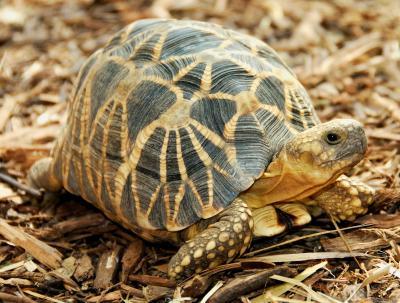 Extinction appears very possible for many species of turtles worldwide unless actions are taken to save them.
From Science Daily:
Decimated by illegal hunting for both food and the pet trade along with habitat loss, many turtle species will go extinct in the next decade unless drastic conservation measures are taken, according to the report, which was released at a regional workshop hosted by Wildlife Reserves Singapore and WCS. Seventeen of the 25 species are found in Asia, three are from South America, three from Africa, one from Australia, and one from Central America and Mexico
....
"Turtles are being unsustainably hunted throughout Asia," said co-author Brian D. Horne of the Wildlife Conservation Society. "Every tortoise and turtle species in Asia is being impacted in some manner by the international trade in turtles and turtle products. In just one market in Dhaka, Bangladesh we saw close to 100,000 turtles being butchered for consumption during a religious holiday, and we know of at least three other such markets within the city."
Liz Bennett, Vice President of WCS Species Program, said: "Turtles are wonderfully adapted to defend themselves against predators by hiding in their shells, but this defense mechanism doesn't work against organized, large-scale human hunting efforts. The fact is that turtles are being vacuumed up from every nook and cranny in Asia and beyond."
While pet trade is often blamed, as this article shows, there are far more factors more damaging to native reptile populations.
Saturday, February 26 2011
 The size of a flattened beach ball, the fossil of a giant frog, nicknamed "Frog from Hell" was discovered recently in Madagascar.
From BBC News:
The team from University College London (UCL) and Stony Brook University, New York, said the frog would have had a body length of about 40cm (16 inches), and was among the largest of its kind to be found.
"This frog, a relative of today's horned toads, would have been the size of a slightly squashed beach-ball, with short legs and a big mouth," explained co-author Susan Evans, from UCL's Department of Cell and Developmental Biology.
"If it shared the aggressive temperament and 'sit-and-wait' ambush tactics of [present-day] horned toads, it would have been a formidable predator on small animals.
"Its diet would most likely have consisted of insects and small vertebrates like lizards, but it's not impossible that Beelzebufo might even have munched on hatchling or juvenile dinosaurs."
For the full article, click here.
Thursday, February 24 2011
By
Thu, February 24 2011 at 13:04
Lets say you mated a coral albino male and a coral albino female. Both are very much albino excrpt for the coral tails. What would the offspring be like? Would their be a lot of hets or more albinow's, or coral tips? These are boa constrictors i'm speaking of.
Wednesday, February 23 2011
 Janaki Lenin had an idea of what she might encounter at the largest reptile show in the U.S., but as she points out, things are not always what you might think.
From The Hindu:
What would the National Reptile Breeders' Expo look like? I struggled hard to imagine what kind of people would buy and sell reptiles. May be ‘weird people' — pot-smoking, long-haired, and elaborately-tattooed dudes who drove Harley Davidsons. Rom, who had been to one several years ago, shook his head: “You've never seen anything like it.” And, he was right!
On an August Saturday balmy morning in 2005, as we walked past the long queue, waiting to get inside the convention centre in Daytona, Florida, I was amazed that ‘straight people' outnumbered the freaks. There were elderly people, young couples, teenagers, little kids. You'd think they were going to the supermarket!
Later in the article she discusses her second visit, and while she probably doesn't remember me, at the time I met both her and her husband, Rom.
By the end of the weekend, thanks to an enthusiastic group of associates, we had raised close to $ 25,000 for gharial conservation from the sale of t-shirts, books, items donated by individuals, zoos and organisations. The reptile fanciers' commitment for the gharial in far-off India was touching. I wondered if we could raise this kind of money for reptile conservation (do I hear an “ugh”?) here, in middle-class India. Sadly, not a chance.
Many of us donated; I know I gave them $20.00 at their booth. Why? Because at this point in my life I had not yet seen a real live gharial. Heck, I have given money to the IRCF Blue Iguana program and this summer was the first time I was with a 100 percent pure Grand Cayman Blue Iguana. To us, saving herps knows no country lines. From the Massasaugas in Illinois to the Gharials in India, I have donated so that they have the chance of living longer than me and that their beauty can inspire future generations of kids like me, who grew up thinking that snakes and lizards were wonderful and beautiful.
Tuesday, February 22 2011
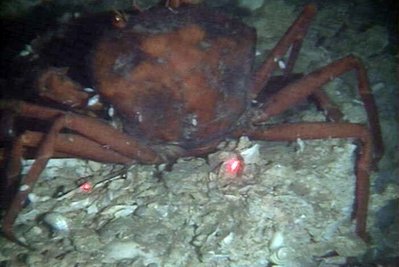 Scientist Samantha Joye recently released findings that contradict the BP spill compensation czar's report that states the Gulf will be completely cleared of all oil by 2012.
From Yahoo News:
At a science conference in Washington Saturday, marine scientist Samantha Joye of the University of Georgia aired early results of her December submarine dives around the BP spill site. She went to places she had visited in the summer and expected the oil and residue from oil-munching microbes would be gone by then. It wasn't.
"There's some sort of a bottleneck we have yet to identify for why this stuff doesn't seem to be degrading," Joye told the American Association for the Advancement of Science annual conference in Washington. Her research and those of her colleagues contrasts with other studies that show a more optimistic outlook about the health of the gulf, saying microbes did great work munching the oil.
"Magic microbes consumed maybe 10 percent of the total discharge, the rest of it we don't know," Joye said, later adding: "there's a lot of it out there."
For the full article, click here.
Monday, February 21 2011
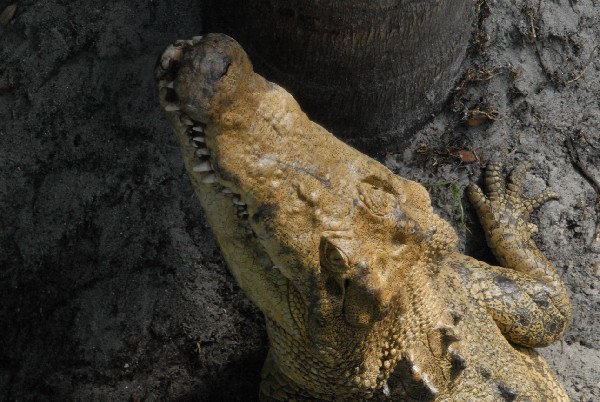 "Crocs don't care if you are black, white, or purple, a tourist or a local, liberal or a truck driving red-neck. Swim in croc territory and you are bait." -Bryan Grieg Fry
With the post-cyclone flooding in Australia, crocs are on the move, and the number of croc attacks are on the rise. One would hope eventually folks would learn to stay away from areas where the salties live after a flood, but they haven't.
First up is a man being lauded a hero, although some of us still expect to see him up for a Darwin Award. Reading this from Daily Mail (and numerous other news agencies) made my head hurt:
Eddie Sigai, nicknamed 'Crocky Balboa' by his friends, punched and gouged the saltwater croc after the powerful animal grabbed hold of his hand.
The 37-year-old, from Weipa, Queensland, was swimming with his daughters Jennifer, 17, and Monica, 12, at a creek last week when the crocodile caught hold of his left hand and dragged him underwater.
Weipa is in Queensland, but still a distance from where the full impact of Yasi. Why a father would allow his children to swim in croc-infestedwaters is beyond me. But in true Aussie swagger, he earned a catchy nickname, "Crocky Balboa" and a tale to bore the pub with.
From ABC News, report of a wayward freshie ending up in someone's pool in Mt. Isa:
"We went and had a good look around the perimeter the following day and I really don't know how it got in," he said.
"Maybe it washed under somewhere in a fence line, but it's too hard to say whether it got in or whether it was put in.
"But I find it hard to believe it did manage to get in by itself."
A 14 year old boy is missing and presumed taken by a croc. From The Australian:
NT Police said they were told late this morning that the boy was playing with his brothers in a creek at Milingimbi in Arnhem Land when he was apparently seized by a crocodile.
Members of the Milingimbi community began searching the creek and surrounding area for the boy, but there had been no sign of him.
Members of the NT police territory response section were flying to the community from Darwin this afternoon to lead the search for the boy, police said in a statement.
Milingimbi is part of the Crocodile Island group off the coast of Arnhem Land, about 440km east of Darwin.
Last, a warning issued:
Chief Minister Paul Henderson is warning people not to play in swollen waterways because flooding has made it easy for saltwater crocodiles to move around.
"We're urging everybody to keep out of those waterways, keep out of those lagoons, keep out of those steams because crocodiles are on the move," he said. To read the full article, click here.
Friday, February 18 2011
 Count the Saltwater Crocs among those affected by Cyclone Yasi, which pummeled Queensland in early February.
First a report from the Billabong Sanctuary in Townsville:
Bob Flemming from the Billabong Sanctuary says his 12 breeding crocs would not surface for several days after the enormous category five cyclone crossed the coast at Mission Beach more than a week ago.
"They were traumatised for a couple of days," Mr Flemming told AAP.
"They stayed underwater for some time and didn't even surface for food."
But he said the crocs, some more than four metres long, have since recovered and are back to feeding again.
His wildlife park lost power but back-up generators kept incubators containing more than 300 crocodile eggs going
A report from last spring shows that after the floods, wild crocodiles are now on the cruise for a good meal.
The unusually heavy falls in the Burke shire, in Queensland's northwest, also brought a nasty surprise for locals in the form of 5m crocodiles.
"Because the floods bring the dead wildlife, the crocs follow them," said Jake Davis, manager of the Burketown Caravan Park.
"There's a big area of water, six or seven kilometres wide, and the crocs are just going where they like."
With the severe flooding this time around, we can only expect the same.
Thursday, February 17 2011
 A recent report on the "Exotic Invasion" is claiming that despite the deep freeze of 2009, invasive species of all types still plentiful in Florida. However what is interesting to me is despite claims of the animals ability to migrate, officials are finding the animals in the same spots as before.
From the Miami Herald:
“Right now, the numbers aren’t all that different,” said park biologist Skip Snow. “We’re finding them in the same places we’ve been finding them.”
While scientists can only estimate the toll the Big Chill took on the army of exotic reptiles, fish and plants in the wilds of South Florida, field observations over the last year suggest nature knocked them down but not out. Some already are speeding down the road to recovery.
David Hallac, the park’s biological resources chief, said he expected a sharp decline in captured snakes. But last year’s total of 322 fell only about 10 percent from 2009.
One species that appears to have seen a sharp decline, and I will mention in my regular trips to Florida, the only wild invasive I have seen on a regular basis is the Green Iguana.
Once about as common as coconuts, green iguana have grown scarce all the way down to the Keys. At previously infested Bill Baggs Cape Florida State Park on Key Biscayne, the largest lizards — six-footers that might give a pit bull pause — have vanished.
But Elizabeth Golden, the park’s biologist, said she’s seeing small greens pop up. There also are plenty of black spiny tail iguanas in all sizes, another species that seems to have weathered the chill, she said, possibly protected by its underground burrows.
This gives a far different report than what we are getting from herpers.
Wednesday, February 16 2011
By Varanid
Wed, February 16 2011 at 16:29
It's not a secret that most herps are poorly studied. Even species that have, collectively, been studied (say, the common garter snake), have not been the subject of ongoing systematic surveys regarding populations in the same way that game animals are.
And why not?
I know state agencies have limited budgets, particularly in this economy, and I don't expect them to pay tens of thousands of dollars to study the population of every herp in their state. But there's almost nothing done on most herp species in most states.
How many Texas Horned lizards are in the state of Texas? Who knows? What about prairie ring neck snakes, or plains black headed snakes? Or western diamondback rattlesnakes? Or six lined racerunners?
How hard would it be to implement a program using volunteer labor to do surveys in state parks? If avocational bird enthusiast are used to help do population surveys of birds, why isn't this done with herps? It wouldn't be entirely free or effortless; there'd have to be some screening of volunteers to make sure they know how to ID the local and regional herps, and that they know how to safely mark/recapture different herps. But that should be fairly easy to do. Have the state herpetologist compile a quiz for different regions (what is the common and scientific name of the herp in this picture?) maybe, and have local parks people use those. Run background checks to make sure there's no poaching convictions.
If there was a program encouraging pairing skilled volunteers up, and assigning them a state park to survey on--say to plant board lines, to run drift fences--and do mark/recapture surveys on the herps of that park, how much knowledge could we gain? I know most herpers would jump at the chance to do surveys on large tracts of protected land--let me set up a good board line in Palo Duro State Park and I'll be more than happy to supply my own boards, tongs, medical insurance, etc.
Instead, many state agencies seem to view us as enemies, as poachers, as a threat. Most of us aren't. Most of the field guys love these animals. We want to know more about them, we want there to be good data on them, and the chance to help that in a meaningful way--where our observations will be published and the facts we find spread beyond the confines of whatever internet fora we frequent--well, that's a dream for us.
So come on, all you state parks and wildlife people--we're here. We're useful. Work with us.
Tuesday, February 15 2011
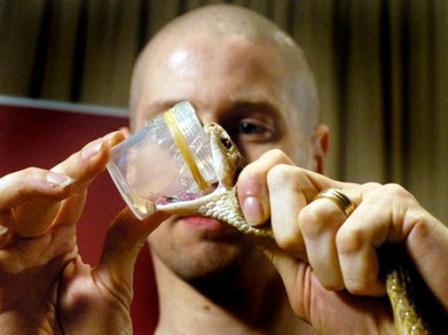 Reptile-loving blogger David Manly tackles the subject of fear of snakes, venomous and otherwise.
From his blog on Scientific American:
Let's face it. Snakes are not most people's favorite animals. They slink and slither without making much noise, have a forked tongue with unblinking eyes, and fangs that bite or coils that wrap. Some snakes are so dangerous that people have died from the encounter.
According to a 2010 report by the World Health Organization, at least 20,000 people are killed by poisonous snakebites every year. Not surprisingly, snakes are commonly feared, disliked, and even hated.
And yet, snakes are some of my favorite animals, and I have been bitten more than my fair share. When I tell the stories of how I've been bitten, I always acknowledge that it was my fault, and that the snakes were acting solely out of instinct and self-preservation.
Yet he moves gracefully from the fear to something more important to medical science, and that is how venom can be used to save lives, with the help of kingsnake.com BFF Dr. Bryan Grieg Fry:
However, as venom continues to evolve, this creates areas Fry calls "hot spots," where venoms have evolved radically and could result in a decrease in the ability for antivenom to do its job. However, as dangerous as the situation can be, there is also opportunity.
These "hot spots" are where novel toxins will appear within venom, which can then be studied and analyzed for future use in drug design and development.
"Venoms have had a huge role in drug design and development such as Captropril, a high blood pressure medication developed from the study of the venom of Bothrops jararaca, [which] kill more people than any other in the region," said Fry.
Therefore, not only has antivenom saved countless people from pain, limb loss, and even death, but the study of venom has also helped develop various products that increase human health.
Not too bad for an animal long thought to symbolize evil.
To read the full blog post, click here.
Monday, February 14 2011
By
Mon, February 14 2011 at 17:24
Large boa and python species, often collectively referred to as “large constrictors” or “large boids” are animals that many reptile hobbyists and enthusiasts find to be beautiful, awe inspiring, and fascinating animals. However, these species can also be potentially dangerous to both their keeper and those in the immediate vicinity under the correct circumstances. However, before we can discuss the topic further, we must further define what a “large constrictor” is. Many individuals would, as a general rule, define such as any species which reaches or exceeds eight feet. There are seven known species, however, which have been documented, or have the potential, to cause significant injury and even fatalities to their keepers due to inexperienced or improper handling and/or husbandry practices. All of these species have the potential to reach or exceed the “eight foot threshold” and can range anywhere from 10 to 20 feet as adults, sometimes achieving even greater lengths depending on species, locality, resource/food availability, and sex of the animal.
These species include:
Indian Python (Python molurus)
Burmese Python (Python bivittatus)
South African Rock Python (Python natalensis)
North African Rock Python (Python sebae)
Green Anaconda (Eunectes murinus)
Amethystine Python (Morelia amethistina)
Reticulated Python (Python reticulatus)
The Boa constrictor (Boa constrictor ssp.) is typically not typically considered in the above list although one confirmed accidental fatality associated with a Boa constrictor has been documented recently of a Nebraska man in June 2010.
Are Giant Snakes Really Man Eaters?
Perhaps the first question to be addressed is, can or do these animals actually view us humans as a natural, staple food source? Despite what many Hollywood movies such as “Anaconda” and other heavily sensationalized and irresponsible media generated hysteria would have the public believe, large constrictors are for the most part reclusive and secretive animals when it comes to humans. Only over the course of the last several centuries, have a small number of accounts existed of several of these species being implicated in unprovoked attacks on individuals in their native range. In general, these species tend to largely be sedentary and cryptic ambush predators as opposed to actively foraging or seeking prey out. They are not unknown to ambush animals such as deer, gazelles, pigs, goats, and similar sized mammals. Therefore it is entirely reasonable to believe that most, if not all, of these instances were the result of mistaken identity on the snake’s part.
But the question remains, can or do these snakes actually swallow humans? There are no doubt several claims of giant snakes being discovered having to have appeared to or been believed to have swallowed a person. No doubt, these claims are widely circulated through the Internet and other media. More often than not, however, these tall tales tend to be either hoaxes generated for publicity, or cases where the animal has swallowed a medium to large non human animal. To my knowledge, only one such “legitimate” predation attempt has occurred involving a reticulated python in S.E Asia, which unsuccessfully attempted to swallow a medium sized human. Simply put, the snake was unable to work its jaws around the woman’s shoulders, which are the widest point on the human body. A large snake has the potential to swallow a smaller person; however, to the knowledge of myself and many others, this has never occurred.
But How Dangerous are these Snakes in Captivity?
As with nearly every species of both wild and domesticated medium sized to large animals we choose to keep in captivity, there exists some element of voluntarily accepted level of occupational risk. Driving automobiles, and even walking across the street among many other activities that we participate in daily or routinely voluntarily can also carry the risk or potential of death or injury. These species of snakes can be or become potentially dangerous if maintained, housed, or handled improperly. Over the last decade or so, there have been several escape incidents and even fatalities in the United States where a large constrictor species was involved. Although statistics show that incidents with captive reptiles are extremely rare compared to other causes of death and injury, they nevertheless almost always fuel highly publicized, and often sensationalist news media reports which portray the entire herpetocultural and exotic animal hobby and industry in a negative light to the general public and to local, state, and federal legislators. As such, incidents involving a large constrictor or other reptile also almost always spur on the initiation of local and state prohibitions or restrictions on the keeping of such species, as well as many other species of reptiles. Both of these factors inevitably make the legitimate and responsible keeping of these animals more difficult.
As stated previously, domesticated species such as dogs, horses, and cattle contribute to a far greater number of injuries and fatalities on an annual basis than reptiles. However, we typically do not see nearly as much media attention or calls to ban dog ownership collectively as a species. The sad fact of the matter is that reptiles, and especially large snakes, have and continue to bear a far more significant brunt of cultural bias and irrational fears than do domestic dogs or other domestic animals. These aforementioned animals typically hold greater public sympathy simply due to “warm cute and fuzzy factor” that reptiles lack.
As with the historical accounts of these animals supposedly predating upon humans in their native ranges, the large majority of these incidents and accidents can be attributed to cases of mistaken identity (see suggested protocol # 4 below) and human error on the part of the keeper. To both my, and many other’s knowledge, no “legitimate” predation attempt has occurred with these animals in captivity, nor has anyone ever actually been swallowed or consumed by their captive pet snake. Certainly though the vast majority of boa and python species kept and bred in captivity do not attain sufficient sizes to be considered any significant threat to human life or limb. Such examples include the commonly bred ball python, blood python, carpet pythons, and Australian Antaresia species, which seldom exceed three or four feet.
Suggested Large Constrictor Snake Protocols to Follow
If one chooses to keep or work with any large constrictor species in captivity, it is therefore IMPORTANT for them to adhere to several safety husbandry protocols. Unfortunately, many owners of these species become or have become far too complacent when handling and/or working with these animals. One day the results could prove devastating. Although these animals often appear to exhibit docility and tolerance to handling, a prospective keeper should always be aware of the snake’s capabilities and the fact that these animals remain “undomesticated”. With this said, let us review several of the safety facets involved with keeping, and handling large constrictors.
1. A large constrictor species should ALWAYS be kept in a secure and appropriately designed enclosure as to prevent its escape. Reports of “pet snake escapes and appears in the neighbor’s toilet” almost always fuel negative media coverage of the herpetocultural hobby and additional restrictive laws against the keeping of reptiles. Housing for a large constrictor should be absolutely escape proof and be lockable in order to prevent both the escape of the inhabitant as well as unauthorized entry into the enclosure by inexperienced individuals. This goes for whichever enclosure you use for temporarily transporting the snake from place to place. Under no circumstances should a large constrictor species be permitted to have “free roam” of any area outside its enclosure unsupervised by qualified individuals. Once again, irresponsibility damages the entire hobby.
2. A large constrictor, of any species 8 feet or greater, should never be handled or worked with alone. This includes even seemingly simple tasks such as changing a water bowl. Or, at the least, another capable individual should be within shouting distance if a situation arises or if assistance is needed. In some cases, depending on the snake’s size, two or even three other individuals are needed. Minors and children certainly should not be permitted to keep or interact with a large constrictor without capable supervision.
3. Under no circumstances should a large constrictor be permitted to coil or be placed around the upper torso or neck. This creates an especially dangerous situation, particularly if there is no one to assist you. These animals are extremely powerful; large constrictors have been known to inadvertently kill their owners by merely “hanging on” to prevent falling.
4. Feeding time is another potentially dangerous situation when working with or keeping large constrictors. Large constrictor species rely largely on their olfactory system and/or heat sensitive pits located on the upper jaw/lip to detect warm blood endothermic prey. However, many such incidents and accidents involving a large snake occur when the snake detects the scent of its usual rodent (or lagomorph) prey on the keeper. It is therefore important to not allow the scent of the prey to come in contact with you and to NOT feed by hand.
5. A large constrictor should not be exposed to the general public outside proper and designated events or locations for such reptiles (such as reptile shows or pet stores). Should a member of the public be injured as a result, the onset of negative consequences for the herpetocultural hobby can be guaranteed. Large constrictors on display at the designated locations should ideally be kept in secure escape proof enclosures that again prevent unauthorized access.
6. Reptile show vendors and herpetoculturists offering these species of snakes for sale need to exercise their best possible judgement when engaging in sales or transactions involving these snakes. Such measures can include, but are not limited to asking buyers questions prior to purchase, providing readily accessable publications and/or care sheets for such species, and providing both hatchling/neonates and adult animals for comparison purposes. Vendors and herpetoculturists must question whether any short term profits made from their transactions outweights the importance of the continued existance of the hobby/industry itself. All buyers and purchasers of large constrictors must as also ultimately exercise responsibility, competence, and sound judgement prior to, and during transactions of these animals. All impulse, or otherwise uninformed purchases should be discouraged by both parties.
In general, it should be said that a prospective owner of any animal should be prepared and able to house and maintain the said species. This is especially critical for a potentially dangerous animal whether it be a large constrictor or a medium to large sized dog. The results or consequences of not doing so can not only lead to tragedy, injury, or an accident, but the compromised health and well being of the animal AND negatively impact the herpetocultural hobby and profession as a whole.
In a day and age when sensationalized television and media seem to be the norm and mainstay, the last thing the herp hobby and industry should provide, is further broadcast material for exploitative shows such as Animal Planet “Fatal Attractions”, the U.S Humane Society, and other entities intent on casting a negative light on the practice of keeping and propagating reptiles. With that said however, large constrictors CAN and do make for interesting and rewarding animals to keep when in the appropriate circumstances for keepers, and herpetoculturists qualified to do so and who possess the adequate amount of space, facilities, and proper knowledge to keep these wondrous animals.
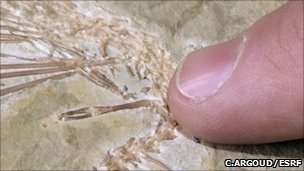 A limestone fossil found in Lebanon holds clues to how snakes lost their legs.
From BBCNews:
The scientists' high-resolution 3D images suggest the legs in this particular species, Eupodophis descouensi, grew more slowly, or for a shorter period of time.
It is a conclusion made possible only after seeing all the bones obscured inside the limestone, and determining that although the creature possessed ankle bones, it actually had neither foot nor toe bones.
"This study reveals the degree of regression of the legs," said Dr Alexandra Houssaye from the Museum National d'Histoire Naturelle (MNHN) in Paris, France.
[....]
Two theories compete. One points to a land origin in which lizards started to burrow, and as they adapted to their subterranean existence, their legs were reduced and lost - first the fore-limbs and then the hind-limbs.
The second theory considers the origin to be in water, from marine reptiles.
This makes the few known bipedal snakes in the fossil record hugely significant, because they could hold the clues that settle this particular debate.
To read the full article and view an accompanying video, click here.
Sunday, February 13 2011
So I just picked up a couple of snakes that were marked indonesian ground boa. Now i am not sure that that is what they really are. and they are about 5 - 6 inches. I am not 100% sure on how to get them to eat and what to feed them. any pointers for me?
Saturday, February 12 2011
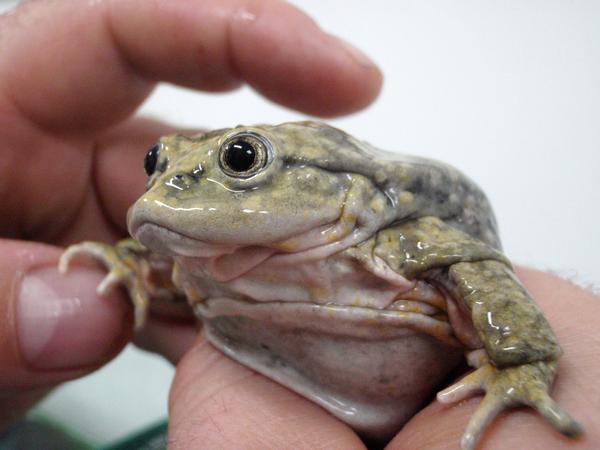 The Denver Zoo is celebrating the birth of tadpoles of the Lake Titicaca frogs in one of their major conservation partnerships.
From the Denverpost.com:
Denver Zoo staff assisted a breeding project at the Huachipa Zoo in Lima, Peru, in December and met with experts from around the world on strategies to preserve the giant frogs in the lake that straddles the border between Peru and Bolivia at 12,500 feet.
The Lake Titicaca frog is the Denver Zoo's top conservation project. Since 2007, the zoo has spent about $100,000 and advised local conservationists in the effort.
Although the five hatchlings did not survive, their births were considered a major step forward.
Denver has quite a long list of conservation projects beyond this one. To see an overview of their projects, click here.
Wednesday, February 9 2011
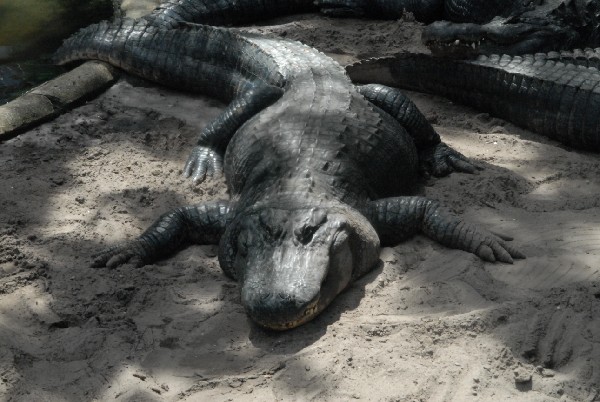 Pennsylvania is home to one of the largest venomous reptile shows, but that may be history of proposed legislation to ban the sale of alligators and venomous snakes passes.
From WHPTV.com:
The question is, is there enough of a problem here that prompted this?
Apparently there is, in fact last year a man who runs a center to help exotic animals. Said this legislation needed to go through specifically about alligators he says he sees.
Senator Richard Alloway is expected to introduce a new bill that Jesse Rothacker says is long overdue. In Pennsylvania it's legal to buy pet alligators that start out tiny and end up huge.
The bill would amend Title 30 and make it illegal to buy or sell American alligators or venomous snakes.
We will keep an eye on the situation and let you know how it progresses. The video news clip can be seen after the bump.
Continue reading "Legislative alert: Pennsylvania looking to ban sale of alligators, venomous snakes"
Tuesday, February 8 2011
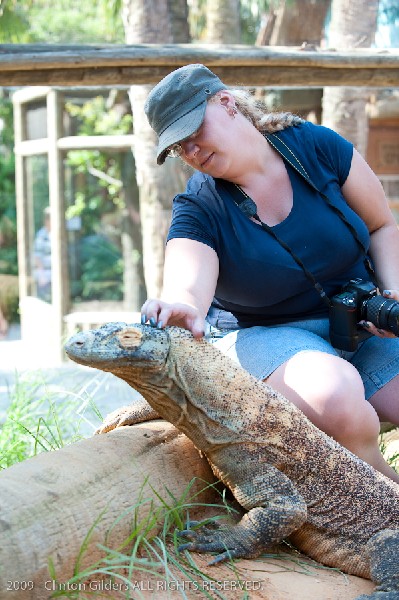 When Krakatoa the Komodo dragon passed away this summer, my heart fell. I had the priveledge to get up close and personal to the amazing boy on a visit to the St. Augustine Alligator Farm. But questions still remained as to what would kill such a young, seemingly healthy animal.
Now, the St. Augustine Record reports:
Dr. Darryl Heard said Krakatoa was a young lizard when he died, which could have put him at risk for viral infections, as young animals have yet to develop immunity against the diseases. Heard is the primary veterinarian for the St. Augustine Alligator Farm and the zoological medicine service chief at the Department of Small Animal Clinical Science at the University of Florida.
Krakatoa had minor changes in his spinal cord, which could have been on-going damage from a viral disease, Heard said.
Other signs of neurological damage included some spinal cord lesions and also a weakness in the lizard's legs, leading Krakatoa to position his legs awkwardly, Heard said.
Steps are being taken to prevent illness in Tambora, the 3-year-old female originally planned to mate with Krakatoa.
Brueggen said the results from Krakatoa's necropsy are frustrating, mostly because it doesn't allow the doctors or specialist to focus on how to prevent a certain disease or virus from affecting Tambora.
Heard and Brueggen both said Tambora will be vaccinated for equine encephalitis and West Nile virus to prevent either disease from causing the lizard harm.
Krakatoa tested negative for both viruses, but both the doctor and Brueggen said it was a preventive measure.
For the full article, click here.
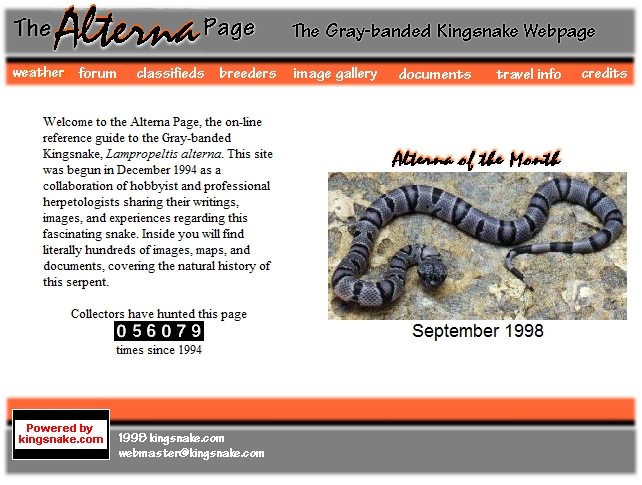 It's hard to believe today marks 14 years since the birth of kingsnake.com.
In 1993, I was a hobbyist gray-banded kingsnake collector and breeder, working for a small computer networking company and learning about a new technology called "the internet." Designed initially as a way for researchers to share data sets, the internet was just becoming available, slowly, to the general public. I was looking for a way to learn more about the technology, and sociology, behind what was termed a fad by many, a whole new form of media by others.
Using Mark Miller's Philadelphia-based dial-up BBS Herp Net as inspiration, and with lots of help from gray-band friends, in 1994 I launched a web page for the small number of gray-banded kingsnake hobbyists online called "The Alterna Page" (pictured right). One of the first reptile-oriented web pages on the internet, it was designed to be a living and evolving compendium of knowledge on the gray-banded kingsnake. However it soon became the gathering spot for reptile and amphibian hobbyists of all interests, with its forums and classifieds providing the seed for what was to follow.
By the end of 1996, traffic on The Alterna Page had grown to the point that my hosting company demanded I purchase my own server and domain name. A $50 a month hosting account was no longer adequate, and my traffic was making their other clients' sites unavailable. It was at that point that hard decisions had to be made. Circumstance rather than design had turned my interesting hobby into a business, one in a new and untried medium, and given very little prospect of success by my family, co-workers, and most of my non-reptile friends.

It was after consulting with a few reptile friends like Joe Forks, John Cherry, Dave and Tracy Barker, and Ron Tremper -- as well as dozens of others -- that I borrowed some money for a server and signed the hosting contract.
On February 8, 1997 -- fourteen years ago today -- kingsnake.com was launched. The "powered by kingsnake.com" button (pictured right) is one of the original files from that web site, and it's still in use today on virtually every page on the site. (To see what kingsnake.com has looked like throughout the years, click on the link below.)
I want to thank the many users, advertisers, sponsors, volunteers, and staffers who have made kingsnake.com what it is today: the largest, most vibrant, and most popular reptile community on the internet.
Continue reading "kingsnake.com turns 14 years old!"
Monday, February 7 2011
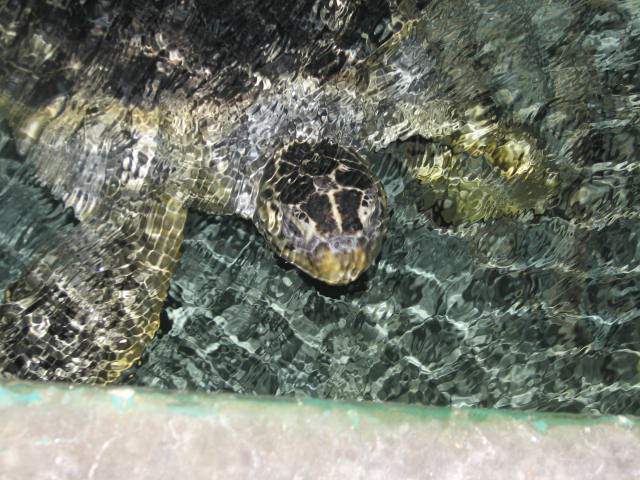 The impact of the Deepwater Horizon Oil Spill was swift and hard and caused more deaths to the critically endangered sea turtles then any other cause in the past several decades.
A news report from mb.com.ph:
The report said the rate of dead, disabled and diseased sea turtles discovered in the months following the massive April 20 spill was four to six times above average. The analysis, by the National Wildlife Federation, the Sea Turtle Conservancy and the Florida Wildlife Federation, was conservative and only took into account turtles found on shore, not those rescued or recovered at sea.
Researchers with the federal government said it would take years to determine the full impact of the spill on sea turtles. Necropsies have been done on more than half of 600 turtle carcasses, and while some may have died from oil, most of the turtles drowned in fishing gear, said Monica Allen, a National Oceanic and Atmospheric Association spokeswoman.
Unseasonably cold temperatures last winter were also detrimental to sea turtles, most of which are considered endangered, said Gary Appelson, policy coordinator for the Sea Turtle Conservancy. "Sea turtles have had a tough year,'' Appelson said.
To read the full article, click here.
Friday, February 4 2011
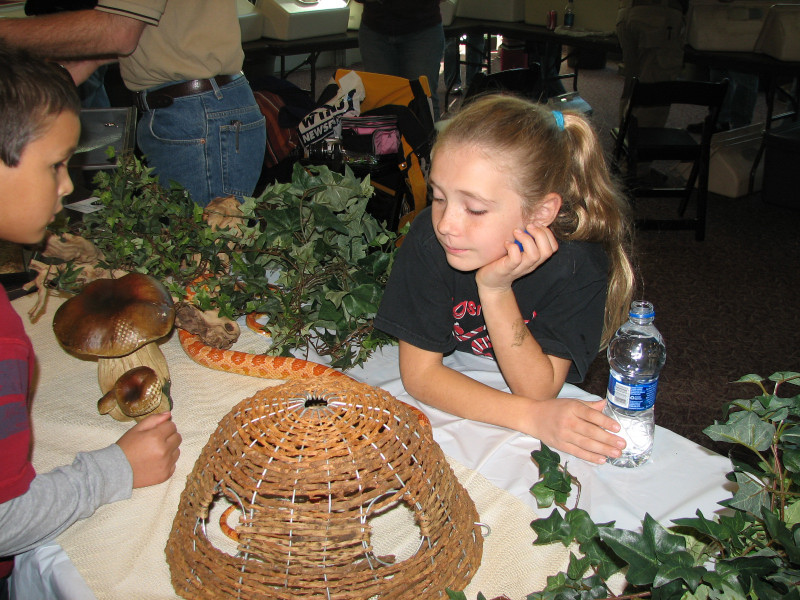 A recent study shows that while children may show a keen interest in things that cause fear in adults -- like snakes -- they do not by nature fear them.
From DiscoveryNews.com:
The study follows on the work co-author David H. Rakison of Carnegie Mellon University did with spiders and infants as well as research Susan Mineka of Northwestern University did with monkeys, which when raised in a lab show no fear snakes. When Mineka attempted to instill a fear of rabbits, flowers, and snakes in the monkeys they much more readily learned to fear the snakes.
Arne Ohman at the Karolinska Institute in Sweden showed that for humans, once a fear of snakes or spiders is established, when a photo of a snake or spider is shown the fear response will last longer than a fear response learned to something less immediately threatening such as a mushroom. The research suggests an evolutionary tendency for humans to have the ability to quickly learn to fear these creepy crawlies and then respond metabolically longer in that state of fear during an encounter.
I have done a ton of public education on reptiles and I always say girls until the age of 6 and boys after the age of 4 are in prime positions to learn to love, respect and understand a variety of animals. At 6, girls tend to start following society and after 4 boys tend to become more independent and are more open to new experiences. Most of the adults I talk with who have a fear will point to something that happened as a child that started the fear. We as humans are born without fear of snakes; perhaps that's one lesson we don't really need to learn.
Thursday, February 3 2011
By
Thu, February 3 2011 at 10:22
Below is a compilation and brief summary/description of the legislative proposals we as a hobby and industry are currently facing on the state and federal level as of 2/03/11 (to my knowledge). I have taken the time to piece this together with the hope that it will serve useful for all members of Kingsnake.com and the reptile community in general. If your state appears in the list below, I strongly encourage you to take appropriate action to ensure your continued freedom to own and work with reptiles.
Federal: HR 511 has been introduced by Representative Tom Rooney (FL-16), once again, to add nine species of boas and pythons to the Injurious Wildlife listing of the Lacey Act, therefore prohibiting importation, and all Interstate commerce/transport of these species. Text is now available. Search by "bill number" for "HR511" on the Library of Congress Website:
H.R.511
Ohio: In a ballot initiative deal brokered last year between the Humane Society of the United States (H.S.U.S) and former Ohio Governor Ted Strickland, an "emergency executive order" has been issued by former Governor Strickland on his last day in office to outlaw the sale and possession of many exotic animals including crocodilians, venomous, and the large constrictors for 90 days. PIJAC, USARK, and OAAO are currently working to overturn this order by contacting the now Governor Kasich: Ohio
Pennsylvania: A recent news report indicates that state senator Richard Alloway plans to introduce legislation in the state of Pennsylvania to "ban the sale of some exotic pets" including crocodilians and venomous reptiles. More information will be posted when available:
Pennsylvania
Mississippi: In a Feb 01, 2011 PetAlert issued by PIAC, the state of Mississippi is considering a "Non Native Reptile Program" to prohibit the release of non native snakes, regulate "venomous" and "constricting" snakes of any kind (how, I do not know), and requires a person to report or turn in any snakes to the department:
Mississippi
Connecticut: The Connecticut Department of Environmental Protection (DEP) has issued a state rule change that would ban the sale and possession of many exotic animals including venomous, large constrictors, crocodilians, and many species of Monitors and other lizards. A public hearing will be held on Feb. 15 2011, and comments will continue to be accepted until March 1st. See the PIJAC Alert for more information if you reside in the state of Connecticut: Connecticut
Indiana: Senate Bill 17 has been prefilled in the Indiana Assembly to make it a Class C Misdemeanor for anyone in "the business of selling exotic reptiles" to obtain a $50 annual permit. This section also provides that any person not in the business of selling exotic reptiles who sells, barters, trades, or in any other way transfers possession of an exotic reptile without notifying the Department of Natural Resources will commit a Class C infraction:
Indiana
Nebraska: Nebraska bill 64 seeks to amend current regulations by requiring "captive wildlife permits" for all "wild reptiles". More information to be posted when it becomes available. Nebraska
Wednesday, February 2 2011
 We already know venom has properties that aid in blood pressure management, diabetes and pain relief, but can it also cure cancer? That is what a study team at the University of Northern Colorado is looking into.
“Ideally, we’d like to have something that will either minimize or eliminate cancer cell growth in the body,” said Mackessy.
They are focusing on three different types of cancer: melanoma, colon and breast cancer.
“One of the reasons for looking at those three is that they’re very, very common in humans here in the United States. It’s a critical health concern,” said Mackessy.
For the full article, click here.
Continue reading "Venom being researched in cancer study"
Tuesday, February 1 2011
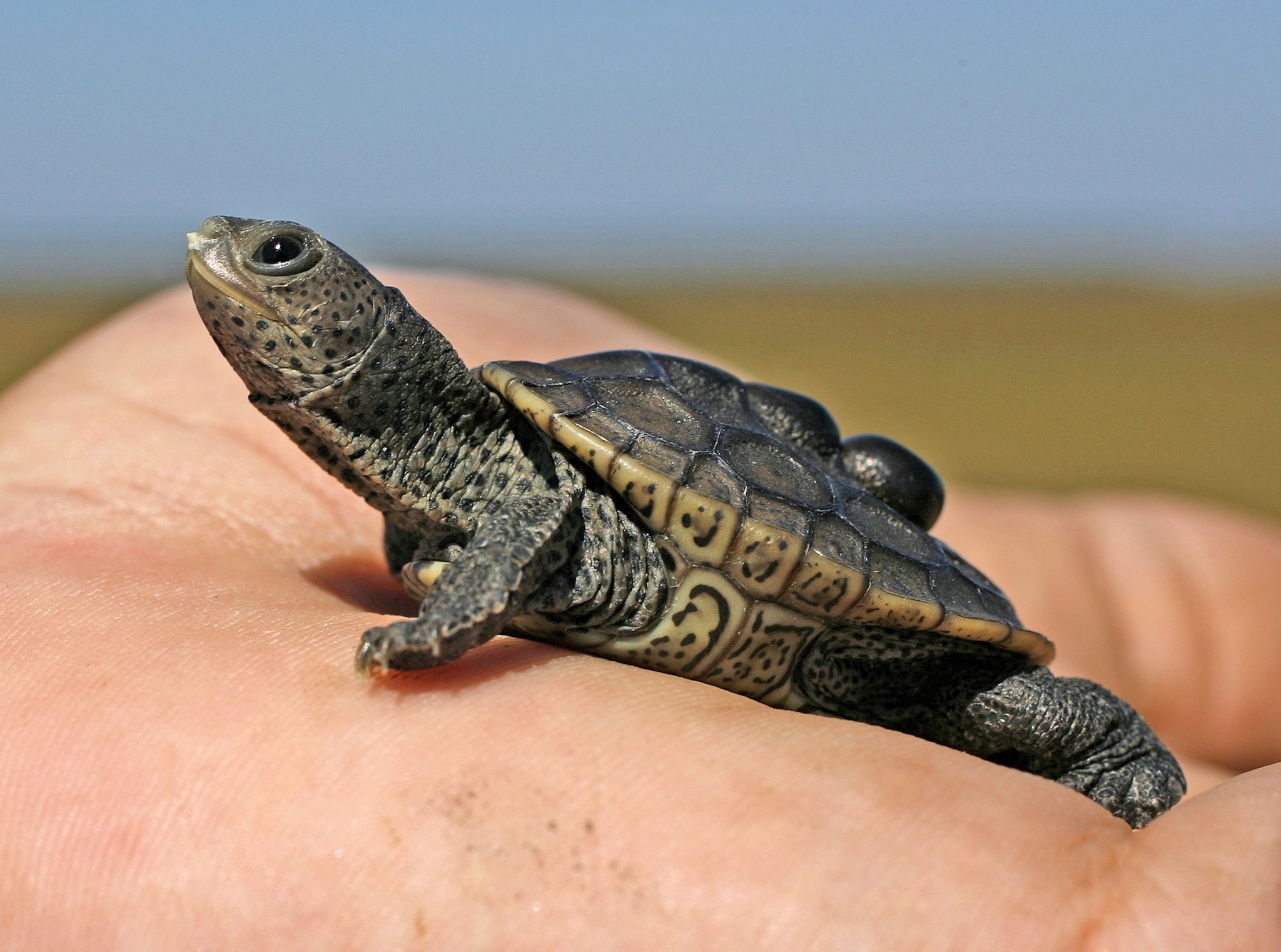 After a devastating summer for wildlife in Gulf Coast States, Alabama received a 1$ million grant to purchase coastal wetlands and create a preserve for the Diamondback Terrapin.
Smith said both tracts are waterfront property that have unique wetlands habitats.
"Both tracts need to be conserved, but one in particular, the one that we call the Heron Bay tract, happens to be the only stronghold of the last remnant habitat for the diamondback terrapin, which is a big deal," Smith said.
"There's a lot of interest in that habitat and some universities have been studying that area for years, and that's basically the last remaining habitat in the state of Alabama for the diamondback terrapin, so we're really excited that we’re getting this award to purchase that property."
Smith said the state Forever Wild program will provide $379,500 in matching funds to buy the property.
The diamondback terrapin is the only turtle in North America that spends its life in brackish water. About 40 to 60 of the turtles are believed to live in south Mobile County, according to a 2008 Press-Register story. The reptile is listed as a species of 'highest conservation concern' by the Alabama Department of Conservation and Natural Resources.
The purchase will also include areas called maritime forests, which are coastal woodlands. For the full article, click here.
|



